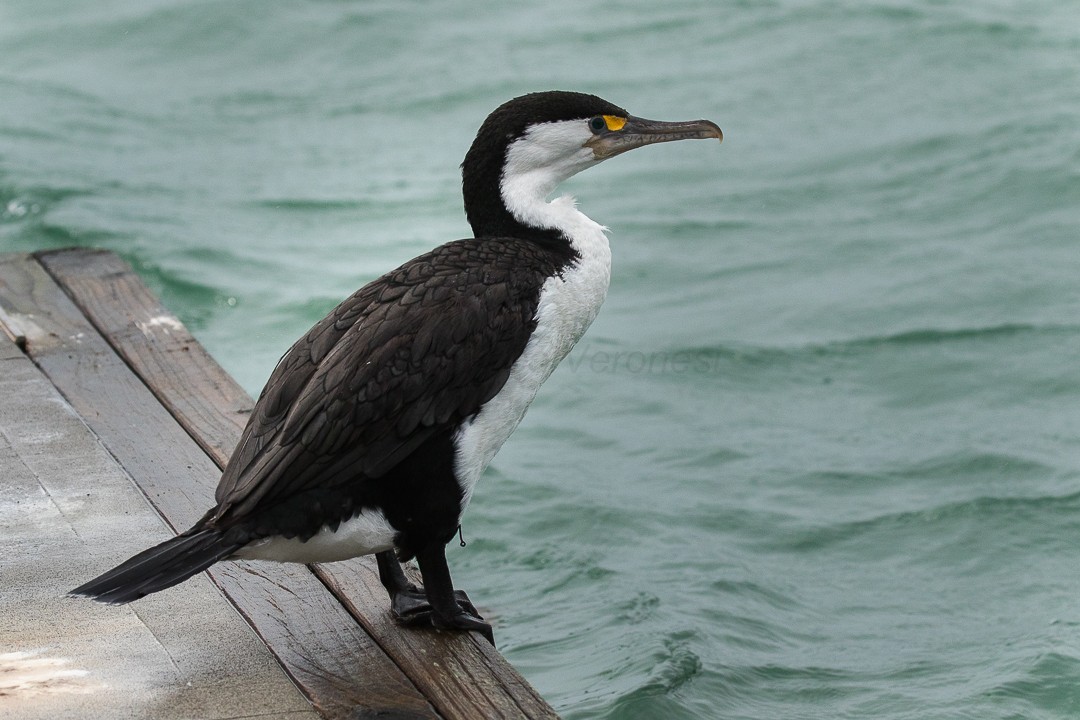Australian Pied Cormorant
A species of Typical Cormorants and Shags, Also known as Pied Cormorant, Pied Shag Scientific name : Phalacrocorax varius Genus : Typical Cormorants and Shags
Australian Pied Cormorant, A species of Typical Cormorants and Shags
Also known as:
Pied Cormorant, Pied Shag
Botanical name: Phalacrocorax varius
Genus: Typical Cormorants and Shags
Content
Description General Info
 Photo By Francesco Veronesi , used under CC-BY-SA-2.0 /Cropped and compressed from original
Photo By Francesco Veronesi , used under CC-BY-SA-2.0 /Cropped and compressed from original Description
The pied cormorant is predominantly black on its back and upper surface of the wings and white on the underside with males weighing approximately 2.2 kg and females 1.7 kg. It stands between 65–85 cm tall, with a wingspan of 110–130 cm. A small yellow patch between the bill and the eye on each side of the head is likely to have been the reason for the historical common name. It has large webbed feet which it utilises to pursue fish underwater, steering with half opened wings. The bird has a large hooked bill, green eyes with a blue eye ring and black legs and feet. The eyes have a special nictitating membrane for underwater protection. The pied cormorant can often be seen spreading its wings after diving to help dry the feathers, as it has inadequate waterproofing. This lack of feather waterproofing may help the cormorant spend longer underwater due to decreased buoyancy effects. There are two recognized subspecies; Phalacrocorax varius varius (New Zealand) and Phalacrocorax varius hypoleucus (Australia) with slight variation in physical characteristics. Similar species include the Black-faced cormorant (slightly smaller) and the little pied cormorant (substantially smaller). 
Size
85 cm
Colors
Black
Yellow
White
Life Expectancy
46.4 years
Nest Placement
Tree
Feeding Habits
Australian Pied Cormorant primarily consumes benthic fish, supplemented by crustaceans, molluscs, and cephalopods. It dives in various water depths, averagely 40-second dives with brief rests. While mostly solitary when hunting, australian Pied Cormorant may group during abundant prey. It balances feeding locations between shallow and riskier deeper waters influenced by predator presence.
Habitat
Australian Pied Cormorant predominantly occupies coastal and inland aquatic environments, with a preference for marine settings including sheltered estuaries, bays, and mangroves, as well as the waters surrounding offshore islands. It is commonly found in areas with shallow seagrass beds, and in landlocked waters like lakes, lagoons, and rivers. Adaptability to various salinity and turbidity levels characterizes its habitat preference, and it nests on natural perches.
Dite type
Piscivorous
General Info
Feeding Habits
Bird food type
Species Status
Not globally threatened.
Scientific Classification
Phylum
Chordates Class
Birds Order
Gannets and Relatives Family
Cormorants Species
Australian Pied Cormorant